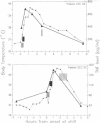Abstract
Paroxysms are sharp episodes of high fever accompanied by chills and rigors that occur periodically, once in every 48 hr in Plasmodium vivax infections. We have measured the changing levels of serum tumor necrosis factor (TNF) during paroxysms in non-immune patients infected with P. vivax malaria. The changes in TNF levels closely paralleled the rise and fall in temperature during the paroxysms but tended to precede them by 30-60 min. These observations suggest that the rise and fall in temperature during P. vivax paroxysm may be directly related to the periodic changes in TNF levels induced during these infections. The peak TNF levels reached during P. vivax infections were much higher than even those which have been recorded during severe and fatal P. falciparum infections in which TNF has been postulated to contribute to the severe manifestations of this disease.
Full text
PDF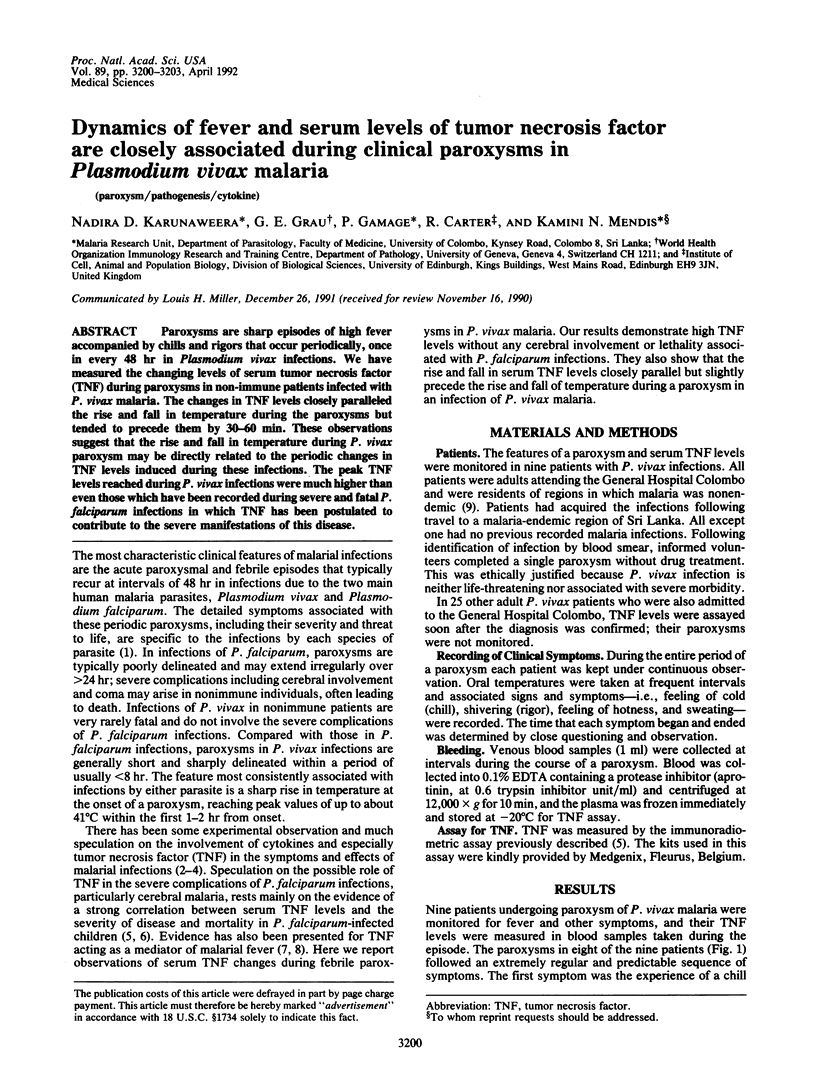
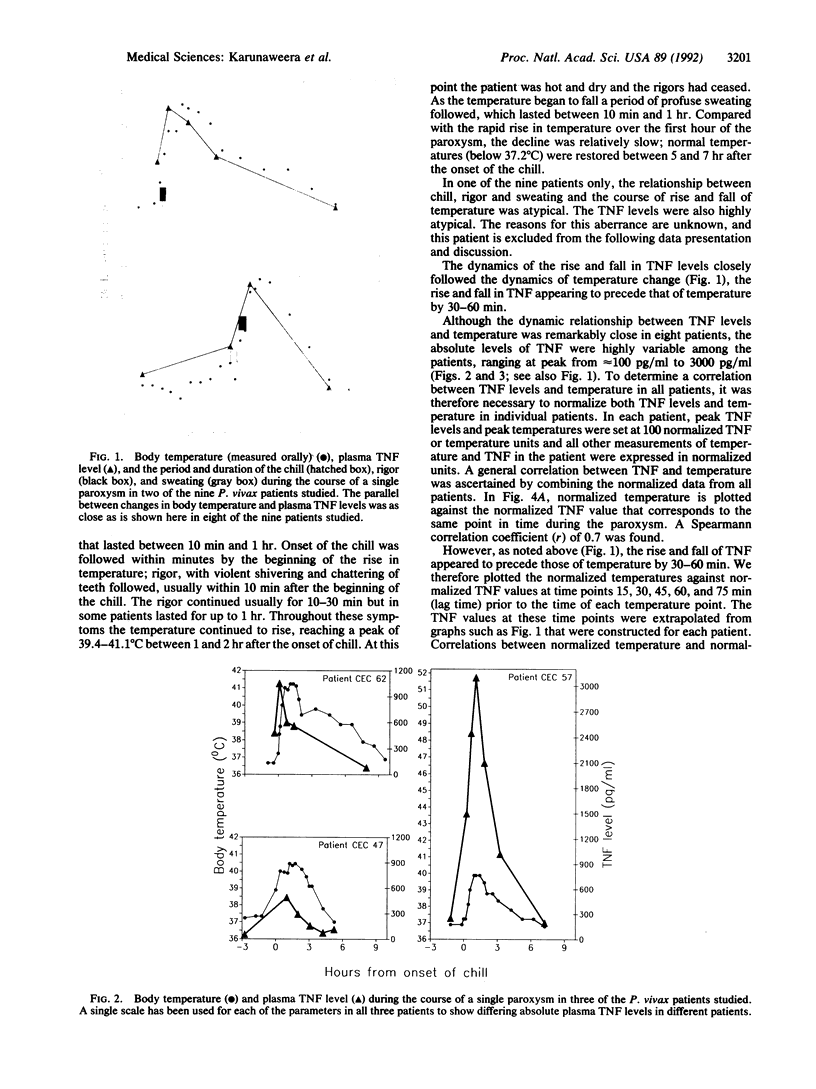
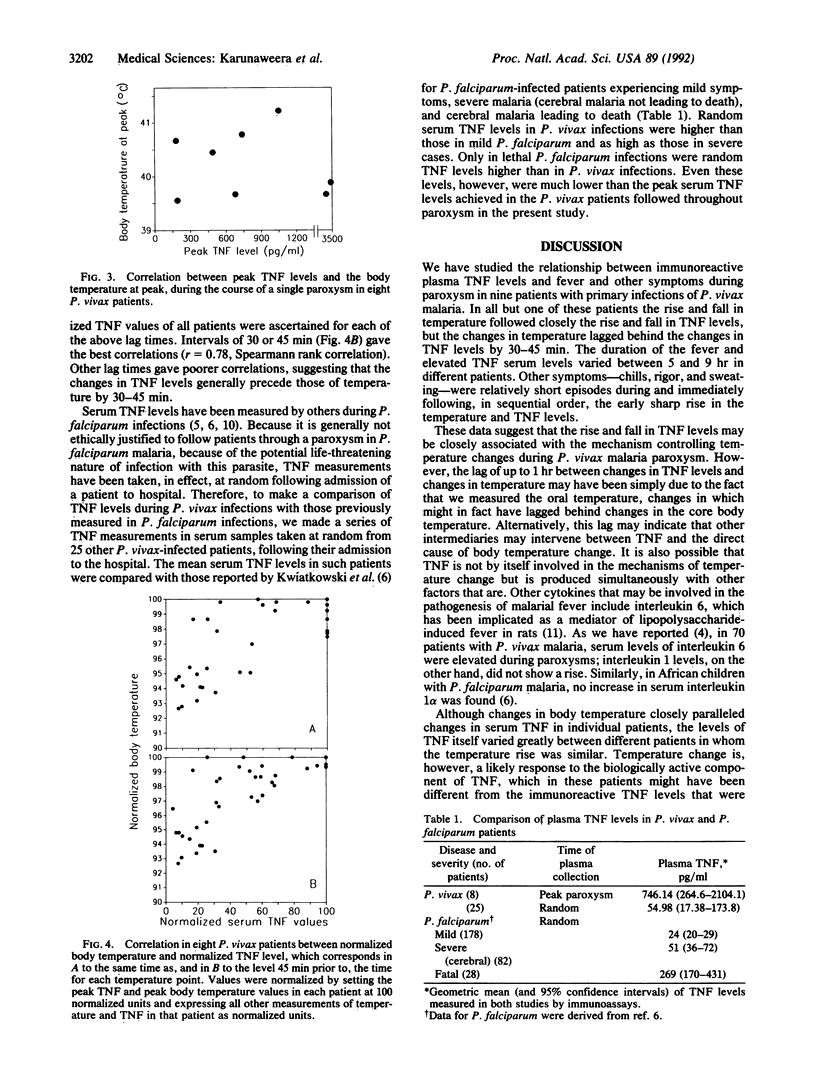
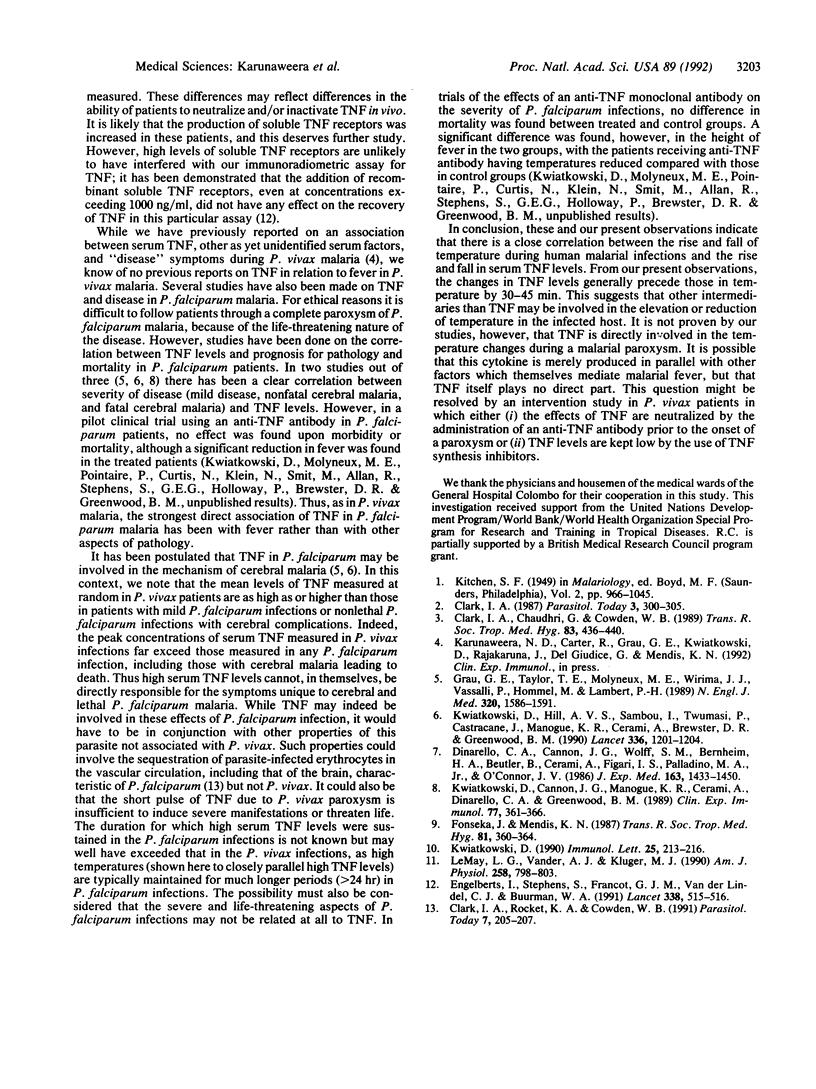
Images in this article
Selected References
These references are in PubMed. This may not be the complete list of references from this article.
- Clark I. A. Cell-mediated immunity in protection and pathology of malaria. Parasitol Today. 1987 Oct;3(10):300–305. doi: 10.1016/0169-4758(87)90187-6. [DOI] [PubMed] [Google Scholar]
- Clark I. A., Chaudhri G., Cowden W. B. Roles of tumour necrosis factor in the illness and pathology of malaria. Trans R Soc Trop Med Hyg. 1989 Jul-Aug;83(4):436–440. doi: 10.1016/0035-9203(89)90240-x. [DOI] [PubMed] [Google Scholar]
- Clark I. A., Rockett K. A., Cowden W. B. Proposed link between cytokines, nitric oxide and human cerebral malaria. Parasitol Today. 1991 Aug;7(8):205–207. doi: 10.1016/0169-4758(91)90142-b. [DOI] [PubMed] [Google Scholar]
- Dinarello C. A., Cannon J. G., Wolff S. M., Bernheim H. A., Beutler B., Cerami A., Figari I. S., Palladino M. A., Jr, O'Connor J. V. Tumor necrosis factor (cachectin) is an endogenous pyrogen and induces production of interleukin 1. J Exp Med. 1986 Jun 1;163(6):1433–1450. doi: 10.1084/jem.163.6.1433. [DOI] [PMC free article] [PubMed] [Google Scholar]
- Engelberts I., Stephens S., Francot G. J., van der Linden C. J., Buurman W. A. Evidence for different effects of soluble TNF-receptors on various TNF measurements in human biological fluids. Lancet. 1991 Aug 24;338(8765):515–516. doi: 10.1016/0140-6736(91)90591-c. [DOI] [PubMed] [Google Scholar]
- Fonseka J., Mendis K. N. A metropolitan hospital in a non-endemic area provides a sampling pool for epidemiological studies on vivax malaria in Sri Lanka. Trans R Soc Trop Med Hyg. 1987;81(3):360–364. doi: 10.1016/0035-9203(87)90135-0. [DOI] [PubMed] [Google Scholar]
- Grau G. E., Taylor T. E., Molyneux M. E., Wirima J. J., Vassalli P., Hommel M., Lambert P. H. Tumor necrosis factor and disease severity in children with falciparum malaria. N Engl J Med. 1989 Jun 15;320(24):1586–1591. doi: 10.1056/NEJM198906153202404. [DOI] [PubMed] [Google Scholar]
- Kwiatkowski D., Cannon J. G., Manogue K. R., Cerami A., Dinarello C. A., Greenwood B. M. Tumour necrosis factor production in Falciparum malaria and its association with schizont rupture. Clin Exp Immunol. 1989 Sep;77(3):361–366. [PMC free article] [PubMed] [Google Scholar]
- Kwiatkowski D., Hill A. V., Sambou I., Twumasi P., Castracane J., Manogue K. R., Cerami A., Brewster D. R., Greenwood B. M. TNF concentration in fatal cerebral, non-fatal cerebral, and uncomplicated Plasmodium falciparum malaria. Lancet. 1990 Nov 17;336(8725):1201–1204. doi: 10.1016/0140-6736(90)92827-5. [DOI] [PubMed] [Google Scholar]
- Kwiatkowski D. Tumour necrosis factor, fever and fatality in falciparum malaria. Immunol Lett. 1990 Aug;25(1-3):213–216. doi: 10.1016/0165-2478(90)90117-9. [DOI] [PubMed] [Google Scholar]



